On Course: A Sampling of Bowdoin's Newest Classes
By Rebecca GoldfineThis semester, faculty members are offering many classes new to Bowdoin — 28 in all. Below, several professors explain their motivation behind designing and offering their new class, and what they hope their students will have gained by the end of the semester. See the complete list of classes here.
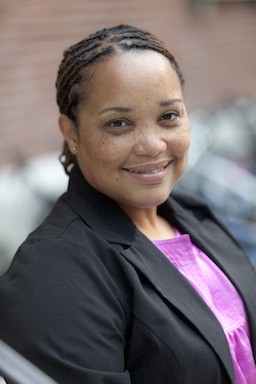
Art History 2450: America by Design
Dana Byrd, assistant professor of art history
The class is a scholarly inquiry into furniture produced and used in the United States from the 17th century through the 20th century. Students learn traditional woodworking skills and build their own objects. Through hands-on examination of American furniture in local collections, students develop the language, methodology, and interpretive skills for object analysis. Both typical and exceptional forms of furniture from each era are studied and historicized, including those for domestic, ecclesiastical, and presentation purposes.
What prompted you to design and offer this course? Furniture evolved from my material culture course, The Thing. That course considered the relationship of objects to everyday life through theory and some practice (a.k.a a session on historic silver at the Bowdoin College Museum of Art). A group of students in that course expressed an interest in studying something artifact related in more depth. Given the rich furniture collections on campus, and in Brunswick, a course on furniture and design seemed like a natural topic. I firmly believe that art historians in the making should have exposure to objects beyond projections on the screen. To that end we will examine furniture forms at the BCMA. Bob Ives, Bowdoin’s director of religious and spiritual life, has also agreed to lead a Shaker box workshop in October, so that students will have a chance to try making an object rather than simply interpreting one.
By the end of the semester, what do you hope your students in the class will have gained? I expect nothing less than to have changed the way that they view their surroundings, including the way that objects structure our daily lives. There are of course other conventional expectations: students who complete this course successfully will be able to identify and describe American furniture from the 17th century until the present. Students will be able to interpret the visual vocabulary related to furniture production, and the resulting consumption of cultural goods. Students will engage, investigate, and appreciate art history as a conversation about how we make sense of the past. Students will hone their skills of visual analysis and interpretation while becoming familiar with the methods most commonly used by art historians.
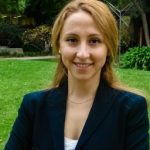 Economics 2304: Economics of the European Union
Economics 2304: Economics of the European Union
Gonca Senel, assistant professor of economics
The class focuses on the core economic aspects of the European Union integration while taking into account historical and political influences. Major contemporary macroeconomic issues, like monetary unification, fiscal policy in a monetary union, theory of customs unions, labor markets and migration, and financial markets and European Union crises, are analyzed through theoretical approaches and empirical evidence.
What prompted you to design and offer this course? After the great recession, we have seen that economies are more interconnected than we think. Being one of the largest economies, the European Union as a subject of study will help students understand the world economy. In addition, students will find the opportunity to apply both macroeconomic and microeconomic theory while analyzing recent events.
By the end of the semester, what do you hope your students in the class will have gained?Students will be able to see the bigger picture. They will learn the history of the European Union and its economic integration thorough trade, monetary, and fiscal policies. There will also be emphasis on the recent crisis and its causes.
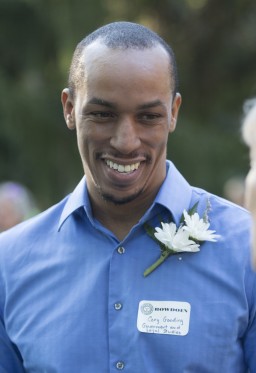 Government 2053: Black Politics (cross-listed with Africana studies)
Government 2053: Black Politics (cross-listed with Africana studies)
Cory Gooding, CFD postdoctoral fellow in government and legal studies
The course traces and examines the political efforts of black Americans to gain full and equitable inclusion into the American polity. Key topics include identity, ideology, movement politics, electoral participation, institutions, and public policy.
What prompted you to design and offer this course? The election of Barack Obama and the rise of the Black Lives Matter movement raise new questions about the political goals and strategies used by black citizens to ensure fair and equitable treatment in the United States. Recent events have caused many to question how much progress has truly been made since the Civil Rights Movement of the 1960s.
By the end of the semester, what do you hope your students in the class will have gained? By the end of the class, I hope that the course will broaden student horizons with respect to theoretical approaches to politics in the United States. They should develop a more robust understanding of how citizens express their political opinions and how these forms of expression have been informed by black movements. Lastly, each student should have historical perspective and the analytical tools necessary to develop their own ideas about the success of political engagement and the obstacles that lay ahead for a more inclusive country.
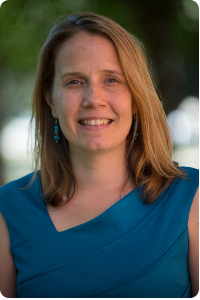
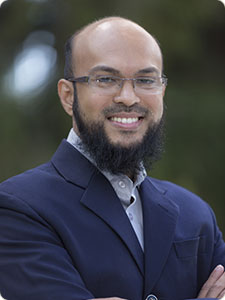 Interdisciplinary Studies 1100: Introduction to Digital and Computational Studies
Interdisciplinary Studies 1100: Introduction to Digital and Computational Studies
Crystal Hall, associate professor of digital and computational studies, and Mohammad Irfan, assistant professor of computer science, digital and computational studies
How are digital tools and computational methods being applied and studied in different fields? How are they catalyzing changes in our daily lives? We will use two case studies to introduce these new tools and methods, and to analyze and evaluate their scholarly and practical applications. The first case study is based on Bowdoin’s own history: how can we use new methods to recreate what Joshua Chamberlain could see at the battle of Gettysburg, and thus better understand the battle and his decisions? Next, we turn to the contemporary, and ask what is identity in the era of social media and algorithms? Students will learn the basics of the Python programming language, introductory spatial analysis with ArcGIS, elementary text and social network analysis, and basic environmental modeling. Assumes no prior knowledge of a programming language.
What prompted you to design and offer this course? Hall: Digital and Computational Studies has spent the last two years talking with faculty about what constitutes “Digital and Computational Studies” at Bowdoin and where future students might find in-depth study in the topics, tools or methods under that heading. With that feedback, we felt ready to offer a survey course that would introduce students to this emerging field of study.
By the end of the semester, what do you hope your students in the class will have gained? Hall: We hope that students will have an awareness of the ethical and interpretive questions raised by computation, digital tools, and data. Many of the readings, discussions and labs return to the question of how the human experience looks when it is transformed into data, so we hope that students will be better equipped to face and solve the challenges of living in an increasingly online world driven by big data analytics.
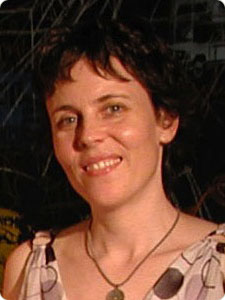 Music 2294: Issues in Hip Hop II (cross-listed with Africana studies and gender and women’s studies)
Music 2294: Issues in Hip Hop II (cross-listed with Africana studies and gender and women’s studies)
Tracy McMullen, assistant professor of music
Issues in Hip Hop II traces the history of hip hop culture (with a focus on rap music) from the 1990s to the present day. Explores how ideas of race, gender, class, and sexuality are constructed and maintained in hip hop’s production, promotion, and consumption, and how these constructions have changed and/or coalesced over time. Investigates hip hop as a global phenomenon and the strategies and practices of hip hop artists outside of the United States. Artists investigated range from Iggy Azalea to Jay-Z, Miz Korona to Ibn Thabit.
What prompted you to design and offer this course? This course builds upon the lessons and discussions of Issues in Hip Hop I. I wanted to give students an opportunity to more fully examine artists of their choosing through the various lenses introduced in Hip Hop I in a smaller class setting. Terms like authenticity, consolidation, and re-mix — as simple as they may seem on the surface in fact took an entire semester to unpack. For example, we could use consolidation (or re-mix) as a practice to describe a plethora of activities in the United States — artistic, corporate, or social.
By the end of the semester, what do you hope your students in the class will have gained? I hope they will understand the “long history” of “hip hop” — that on the one hand, the aesthetics and practices developed within very particular circumstances exemplified best in the Bronx in the 1970s, but on the other hand, the term “hip hop” has since been deployed in various ways by various groups for all types of purposes and we need to be very careful about claims of what hip hop is or is not. Hip hop can be understood as an aesthetic, a practice, and for some, a worldview, but the term is also used as shorthand, or perhaps, disguise, for commentary on other issues. I hope students will gain a deeper and more nuanced understanding of the history of this artform as well as the possibilities and problems found within the form and its dissemination. I want students to be able to bring this information to bear on their own personal engagements with hip hop, as well as use what they’ve learned about hip hop to further understand the possibilities and problems within the United States more broadly.
Philosophy 1042: Crime and Punishment
Kristi Olson, assistant professor of philosophy
One in every 35 adults in the United States is either incarcerated or on probation or parole. This raises a number of important philosophical questions including: What justifies punishment? For example, is punishment justified because it deters future crime or is it justified because perpetrators deserve to be punished? What should be criminalized? Should acts between consenting adults — for example, prostitution — be criminalized? Which police tactics are morally permissible? Should racial profiling be allowed? Who, if anyone, should be excused from punishment? This course will address these and related questions. Guest speakers include a philosophy professor from the University of Toronto and the current police chief of Burlington, Vt., an 18-year veteran of the New York Police Department.
What prompted you to design and offer this course? When I was in law school, I worked on the defense team for a North Carolina inmate on death row and that was definitely a formative experience. There are a lot of difficult philosophical questions about criminal justice that, perhaps surprisingly, are rarely discussed in law schools. This course provides students with an opportunity to grapple with these problems.
By the end of the semester, what do you hope your students in the class will have gained? One of the seniors in my Morality of War seminar last year said that he would have been a philosophy major had he known prior to taking my course how relevant philosophy really is. One of my goals for the course, then, is to introduce students to philosophy, but to do so through issues that are familiar to anybody who reads the newspapers or watches crime shows on TV. We as a society have to make difficult decisions about our criminal justice system, and ideally students who take this course will be prepared to do so.
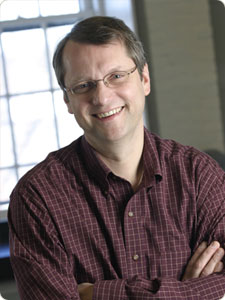
Physics 2410: Accident Reconstruction — Physics, The Common Good, and Justice
Dale Syphers, professor of physics
The course introduces the applications of physics pertinent to accident reconstruction and analyzes three complex cases that were criminal prosecutions. The instructor analyzes the first case to show how the physics is applied, the second is done in tandem with students, and the third is mostly analyzed by the students, using what they have learned. The report on this third case serves as the final project for the course. While Physics 1130 is the only prerequisite for the course, familiarity with vectors and matrices, or a desire to learn how to use them, is necessary.
What prompted you to design and offer this course? There are many reasons why I wanted to design and offer this course. I have been doing accident reconstruction for 25 years, and find it uses the same types of skills as my physics research does. This makes it an interesting way to get across how science is done to which many people can relate. In addition, in an age where students have grown up watching popular media shows that include forensic work (CSI, NCIS, Forensic Files, even Law & Order, etc.), I thought it would give them a realistic view of how this work is actually done, warts and all. Warts? Yes, warts. There are many instances where those trained to do accident reconstruction without a broad background in physics get it horribly wrong. This allows me to engage issues of justice, our adversarial court system, and the role of “expert” testimony, including how “experts” are defined.
By the end of the semester, what do you hope your students in the class will have gained? By the end of class I hope students will have learned how to approach reconstructing an accident from the physical evidence at the scene (or via pictures taken at the scene). The goal is always to explain as much of the physical evidence as possible using physics — the fundamental laws governing the motion of objects — to understand the proper role of uncertainty and how to do cross-checks to minimize the uncertainty. The course will cover three accidents I have worked on. In the first one I show them how I determined what happened, in the second we work together on it, and the third they try to do all by themselves (perhaps with a little prompting). They will learn about the underlying physical laws governing motion and how to apply them, and maybe even a little materials science. In addition, it is my hope they come to understand more about how our court system works, including its flaws, when it comes to technical testimony.
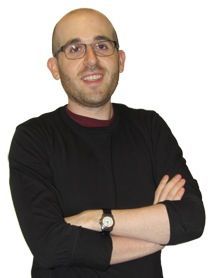
Religion 2230: Human Sacrifice
Todd Berzon, assistant professor of religion
The class uses the practice of human sacrifice to investigate the relationship between religion and violence. As an act of choreographed devotion, sacrifice implicates notions of debt, transformation, exchange, purification, sacredness, death, and rebirth. It is a ritual designed to destroy for an effect, for an explicit if often intangible gain. On the one hand, human sacrifice involves all of these same issues and yet, on the other hand, it magnifies them by thrusting issues of agency, autonomy, and choice into the mixture. Must a sacrificial victim go peaceably? Otherwise, would the act simply be murder? Investigates the logic of human sacrifice. How have religions across history conceptualized and rationalized the role and status of the human victim? Considers a diverse range of examples from the Hebrew Bible, Greek tragedies, the New Testament, science fiction, epics, missionary journals and travelogues, horror films, and war diaries.
What prompted you to design and offer this course? I wanted to teach a course about the relationship between religion, violence, and death — a huge and hugely complicated set of subjects. I needed a theme that limited the scope of the course — that somehow narrowed the huge possible pool of evidence, literature, and art that I would show my student — and in human sacrifice, I found that theme. I chose human sacrifice because of has particular resonance in my field of study: the ancient world. From Abraham (and Isaac) to Roman gladiators and Christian martyrs, the ancient world has much to say about ritual murder. In the ancient world, human sacrifice had enormous social and religious symbolism. Also, let’s be clear: human sacrifice is fascinating!
By the end of the semester, what do you hope your students in the class will have gained?I want my students to understand the reasons and motivations that inform acts of human sacrifice in order so that they can see that sacrifice is a ritual governed by rules and regulations. It’s easy to say, “well, human sacrifice is barbaric.” But that’s not a particularly useful (or even necessarily true) statement. It’s much more important to understand the logic of these actions not so that we can endorse them but rather so that we can understand their social significance. Human sacrifice ultimately gets at a much bigger question: how does religion — with its rites and beliefs—create communities? How does it unite and divide people? Human sacrifice, as odd as it may seem, was a ritual that enacted the worldviews of certain religious communities. It is through studying this particular rite that we get a glimpse of the contours of the very thing we call religion.



